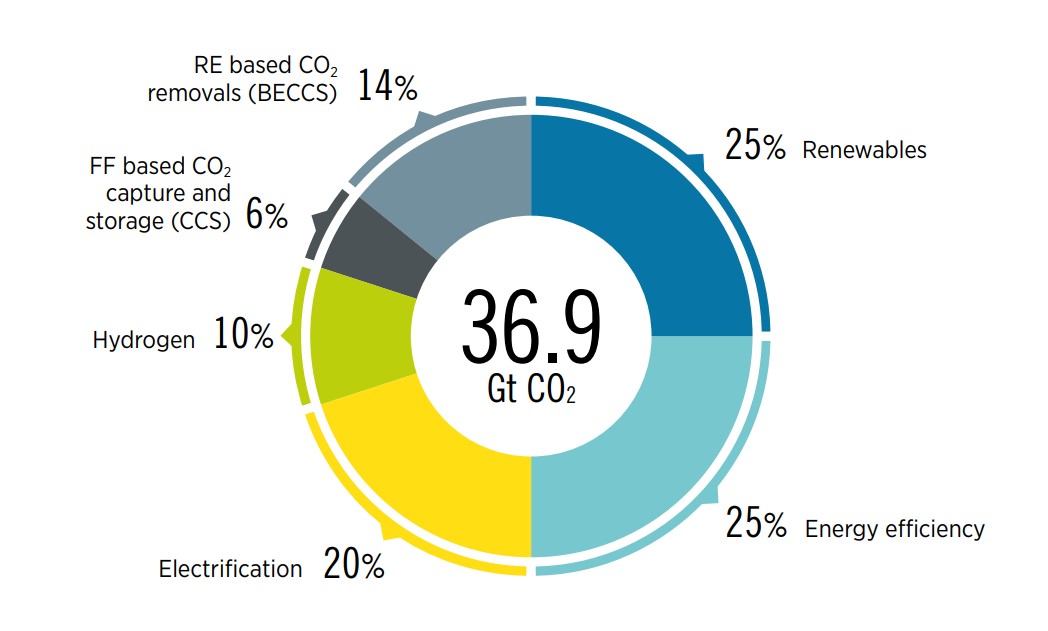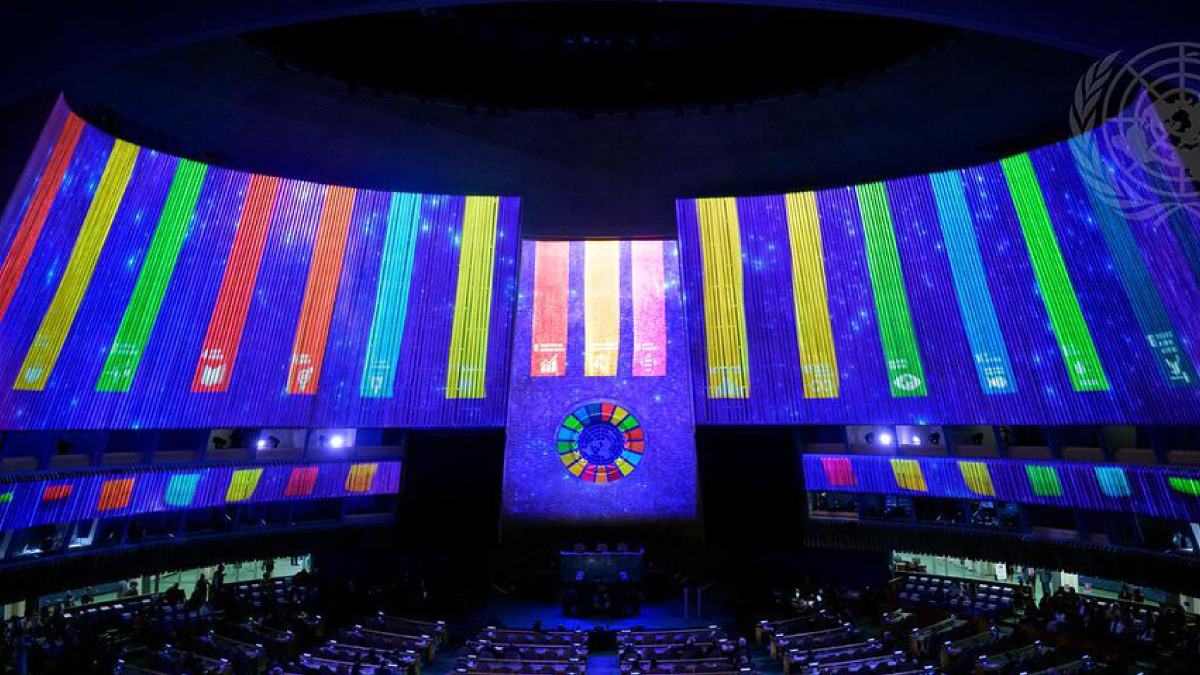Fossil Fuels to Dominate Energy Use Beyond 2050, Raising Concerns About Long-Term Environmental and Economic Impact – Energy Reporters

Global Energy Outlook: A Report on Progress Towards Sustainable Development Goals
Executive Summary
A recent analysis of the global energy landscape indicates a significant challenge to the achievement of key Sustainable Development Goals (SDGs), particularly SDG 7 (Affordable and Clean Energy) and SDG 13 (Climate Action). Despite advancements in renewable technologies, projections show a continued, albeit reduced, dominance of fossil fuels beyond 2050. This trend is driven by rising electricity demand, geopolitical priorities, and economic factors, threatening to undermine global commitments under the Paris Agreement. This report outlines the primary findings and their direct implications for the 2030 Agenda for Sustainable Development.
- Fossil Fuel Reliance: The projected persistence of fossil fuels, potentially accounting for up to 55% of the energy mix by 2050, directly conflicts with the targets of SDG 7 and SDG 13.
- Increased Energy Demand: A 20-40% rise in electricity demand, fueled by industrial growth (SDG 9) and urbanization (SDG 11), is outpacing the transition to clean energy sources.
- Economic and Security Priorities: National interests in energy security and affordability are currently being prioritized over climate objectives, creating a significant barrier to progress on SDG 13.
- Renewable Energy Potential: A substantial opportunity exists to align with SDG 7, as renewables could constitute 61-67% of the global power mix by 2050 with targeted policy and investment, underscoring the importance of SDG 17 (Partnerships for the Goals).
Challenges to SDG 7 (Affordable and Clean Energy)
Persistent Fossil Fuel Dominance
The global energy system’s transition towards clean sources, a core objective of SDG 7, is proceeding slower than required. Projections indicate that fossil fuels will comprise 41% to 55% of total energy consumption by 2050. While this is a reduction from the current 64%, it represents a significant volume of greenhouse gas emissions. The anticipated plateau in oil demand is not expected until the 2030s, and natural gas usage in electricity generation is set to grow. This continued dependency hinders the goal of substantially increasing the share of renewable energy in the global mix.
Rising Electricity Demand from Industry and Infrastructure
The progress towards SDG 7 is further complicated by a projected 20-40% increase in global electricity demand by 2050. This surge is largely attributed to two other development goals:
- SDG 9 (Industry, Innovation, and Infrastructure): Expansion in the industrial sector and the proliferation of energy-intensive infrastructure, such as data centers in North America, are major drivers of this demand.
- SDG 11 (Sustainable Cities and Communities): The growth of the building sector in expanding urban centers contributes significantly to rising electricity consumption.
Meeting this new demand with existing fossil fuel infrastructure, including coal and natural gas, jeopardizes the clean energy transition central to SDG 7.
Implications for SDG 13 (Climate Action)
Geopolitical and Economic Barriers
Global efforts to meet the targets of SDG 13 and the Paris Agreement are being hampered by competing priorities. Governments are increasingly focused on energy security and affordability, particularly in light of geopolitical instability and economic recession risks. This focus has led to policy decisions that sustain the use of fossil fuels, creating a direct conflict between short-term economic stability, aligned with SDG 8 (Decent Work and Economic Growth), and the long-term environmental imperatives of SDG 13.
Projected Failure to Meet Climate Targets
The continued high-level use of oil, gas, and coal makes the achievement of global net-zero targets increasingly difficult. The slow adoption of alternative fuels, which is unlikely to become widespread before 2040 without significant mandates, means that emissions will remain at levels inconsistent with the goals of SDG 13. The report underscores that the current trajectory of energy consumption is insufficient to mitigate the adverse impacts of climate change.
Pathways Forward: Aligning Energy with Sustainable Development
Harnessing the Potential of Renewables
Despite the challenges, a viable path exists to significantly advance SDG 7 and SDG 13. Projections show that renewable energy sources have the potential to provide between 61% and 67% of the global power mix by 2050. Realizing this potential is critical for a sustainable future and requires a concerted global effort to accelerate the transition. This shift not only addresses environmental concerns but also enhances energy security and independence from volatile fossil fuel markets.
The Imperative for Policy, Investment, and Partnerships (SDG 17)
To overcome existing barriers and capitalize on the potential of renewables, a strategic and collaborative approach is necessary. This aligns with SDG 17 (Partnerships for the Goals) and requires action on multiple fronts:
- Substantial Investment: Significant capital must be mobilized from both public and private sectors to fund the large-scale deployment of renewable energy infrastructure.
- Supportive Policies: Governments must implement robust policies, including mandates and incentives, that accelerate the phase-out of fossil fuels and encourage the adoption of clean energy technologies.
- Technological Innovation: Continued investment in research and development is needed to improve the efficiency and reduce the cost of renewable energy solutions.
Balancing the interconnected goals of economic growth (SDG 8), sustainable industry (SDG 9), and climate action (SDG 13) hinges on a rapid and decisive pivot towards the clean energy targets outlined in SDG 7.
Analysis of Sustainable Development Goals (SDGs) in the Article
1. Which SDGs are addressed or connected to the issues highlighted in the article?
-
SDG 7: Affordable and Clean Energy
- The article’s central theme is the global energy mix, focusing on the continued dominance of fossil fuels versus the potential growth of renewable energy. It directly discusses energy sources, electricity demand, and the transition to cleaner energy, which are the core components of SDG 7.
-
SDG 13: Climate Action
- The text explicitly links the reliance on fossil fuels to challenges in achieving “global net-zero climate targets” and meeting the “Paris Agreement targets.” This establishes a direct connection between the energy consumption patterns discussed and the urgent need for climate action as outlined in SDG 13.
-
SDG 9: Industry, Innovation, and Infrastructure
- The article identifies the “industrial and building sectors” and “data centers” as primary drivers of the projected 20-40% increase in electricity demand. This highlights how industrial growth and infrastructure development are intrinsically linked to energy consumption and sustainability challenges, which is a key concern of SDG 9.
2. What specific targets under those SDGs can be identified based on the article’s content?
-
SDG 7: Affordable and Clean Energy
- Target 7.2: By 2030, increase substantially the share of renewable energy in the global energy mix. The article directly addresses this target by projecting that renewables could provide “61% to 67% of the global power mix by 2050,” while also noting the challenge that fossil fuels will still account for “41% to 55% of global energy consumption.”
- Target 7.a: By 2030, enhance international cooperation to facilitate access to clean energy research and technology… and promote investment in energy infrastructure and clean energy technology. The article implies the need for this target by stating that the transition to renewables “would require substantial investments and policy support.”
-
SDG 13: Climate Action
- Target 13.2: Integrate climate change measures into national policies, strategies and planning. The article highlights a direct challenge to this target, noting that “Governments are prioritizing energy affordability and security, sometimes at the expense of meeting Paris Agreement targets.”
-
SDG 9: Industry, Innovation, and Infrastructure
- Target 9.4: By 2030, upgrade infrastructure and retrofit industries to make them sustainable… with all countries taking action in accordance with their respective capabilities. The article points to the difficulty in achieving this target by explaining that the rising electricity demand from industries and data centers is being met with a continued reliance on fossil fuels like natural gas and coal, rather than a swift transition to sustainable energy sources.
3. Are there any indicators mentioned or implied in the article that can be used to measure progress towards the identified targets?
-
Indicators for SDG 7 (Target 7.2)
- Indicator: Share of renewable energy in the global power mix. The article provides a specific projection that this could reach “61% to 67% by 2050.”
- Indicator: Share of fossil fuels in total final energy consumption. The article projects this will be between “41% to 55% of global energy consumption by 2050,” a decrease from the current “64%.”
-
Indicators for SDG 9 (Target 9.4) and SDG 7
- Indicator: Growth in electricity demand from key sectors. The article quantifies this with a projected increase of “between 20% and 40%” by 2050, driven by the industrial and building sectors. This serves as a measure of the energy challenge that sustainable infrastructure must address.
-
Indicators for SDG 13 (Target 13.2)
- Indicator (Qualitative): Integration of climate goals into national policy. The article implies a negative trend for this indicator by stating that geopolitical and economic factors are causing governments to prioritize “energy security” over climate goals, thus hindering progress.
4. Table of SDGs, Targets, and Indicators
| SDGs | Targets | Indicators |
|---|---|---|
| SDG 7: Affordable and Clean Energy | 7.2: Increase substantially the share of renewable energy in the global energy mix. |
|
| SDG 13: Climate Action | 13.2: Integrate climate change measures into national policies, strategies and planning. |
|
| SDG 9: Industry, Innovation, and Infrastructure | 9.4: Upgrade infrastructure and retrofit industries to make them sustainable. |
|
Source: energy-reporters.com

What is Your Reaction?
 Like
0
Like
0
 Dislike
0
Dislike
0
 Love
0
Love
0
 Funny
0
Funny
0
 Angry
0
Angry
0
 Sad
0
Sad
0
 Wow
0
Wow
0
















































/environment-climate-change-and-health-(ech)/water-sanitation-hygiene-and-health-(wsh)/landfill-tuvalu-36092.tmb-1200v.jpg?sfvrsn=5c21fe40_1#)

.jpg.webp?itok=0ZsAnae9#)


























